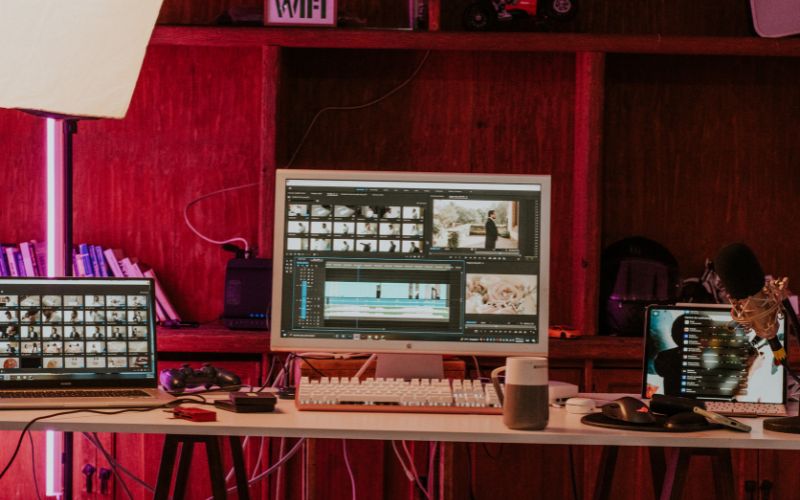
The Art of Storytelling In Video Production
Storytelling is an essential part of video production. A compelling story can engage viewers, communicate a message, and evoke emotions. However, not all videos are successful in telling a story. There are certain elements and techniques that video producers can use to craft a compelling story that captivates their audience. In this blog, we’ll explore the art of storytelling in video production.
Start with a solid concept
Every great story starts with a solid concept. It’s important to have a clear idea of what you want to communicate to your audience. What is the message you want to convey? What emotions do you want to evoke? What’s the story you want to tell? Answering these questions will help you develop a concept for your video.
Develop a script
Once you have a concept, it’s time to develop a script. A script is the foundation of any video production, and it’s important to take the time to get it right. Your script should include a clear beginning, middle, and end. It should have a compelling storyline that engages your audience from start to finish. Make sure your script is concise, clear, and easy to understand.
Use visuals to support your story
Visuals are an essential part of video storytelling. They help to support the story you’re telling and can evoke emotions in your audience. Make sure you choose visuals that are relevant to your story and support your message. Use a variety of shots, including close-ups, medium shots, and wide shots, to keep your audience engaged.
Pay attention to pacing
Pacing is an important element of storytelling in video production. You want to keep your audience engaged throughout the video, but you don’t want to rush through the story. Pay attention to the pacing of your video, and make sure it’s appropriate for the story you’re telling. Use music, sound effects, and other elements to help you control the pacing of your video.
Choose the right music
Music can have a powerful impact on your video. It can evoke emotions, set the tone, and help to support the story you’re telling. Choose music that’s appropriate for your story, and make sure it’s not distracting. Use music to enhance your video, not overpower it.
Use sound effects
Sound effects can help to bring your video to life. They can create a sense of atmosphere and help to convey emotion. Use sound effects sparingly, and make sure they’re appropriate for your video. Don’t overuse them, as this can be distracting and take away from the story you’re telling.
Use narration
Narration can be a powerful tool in video storytelling. It can help to explain complex ideas and add a personal touch to your video. Use narration sparingly, and make sure it’s appropriate for your video. Make sure your narrator has a clear and concise voice that’s easy to understand.
Use interviews
Interviews can be a great way to add depth and context to your video. They can help to tell a personal story and add credibility to your message. Choose interview subjects that are relevant to your story, and make sure they’re comfortable in front of the camera. Ask open-ended questions to encourage them to tell their story in their own words.
Focus on the audience
The most important element of video storytelling is the audience. You want to create a video that engages and connects with your audience. Focus on the emotions you want to evoke, and make sure your video is relevant to your audience. Keep your audience in mind throughout the production process, and make sure your story resonates with them.
Edit ruthlessly
Finally, it’s important to edit your video ruthlessly. Cut out anything that’s not essential to the story, and make sure your video flows smoothly. Use transitions to connect different elements of your story and ensure a seamless viewing experience. Pay attention to the pacing and make sure your video is not too long or too short.
In conclusion, the art of storytelling in video production is an essential element that can make or break the success of your video. A compelling story can engage viewers, communicate a message, and evoke emotions. By starting with a solid concept, developing a script, using visuals, paying attention to pacing, choosing the right music, using sound effects, narration, and interviews, focusing on the audience, and editing ruthlessly, video producers can craft a compelling story that captivates their audience. Remember, the key to successful video storytelling is to keep the audience in mind throughout the production process and create a video that resonates with them.
Related Blogs
The Benefits of Incorporating Subtitles and Closed Captions In Videos
The Benefits of Incorporating Subtitles and Closed Captions In Videos Videos have become one of the most popular [...]
Tips for Shooting High-Quality Videos With a Smartphone
Tips for Shooting High-Quality Videos With a Smartphone With advancements in technology, it is now possible to capture [...]
How To Create An Effective Video Script
How To Create An Effective Video Script Video is one of the most effective mediums for communication and [...]






